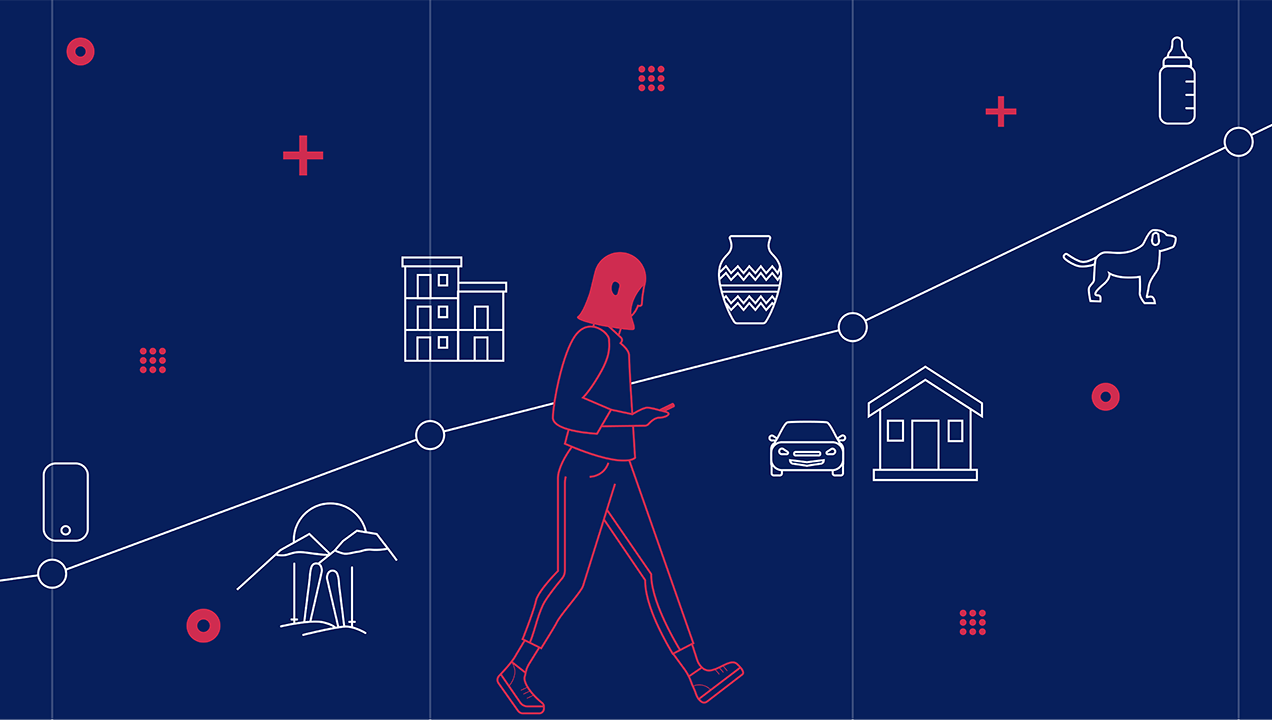Insurance Experiences: The Persona Problem
Insurance is a complex business, and for the experience designer, it presents some truly unique challenges. Perhaps the most obvious one is the inescapable fact that insurance embodies a range of products and services that, with luck, you’ll never need or want to use. Think about that, it’s up there with ejector seats and flare guns.

Image by Sonja Kozik
This represents a double-edged sword for insurers who want to build stronger customer engagement, because it means when their customer interacts with them most – and is most available for a new product upsell – it’s usually when they are having a really bad day. For the rest of their customers, if they’ve just received a renewal reminder for a service they have never claimed for, it often prompts a trip to a cute-mammal-themed price comparison site. It’s lose:lose on the customer engagement stakes, unless you get creative.
For insurers, this need for creativity is just the tip of the iceberg. Their customer service has to appear seamless, but behind it there are layers of back-office complexity. It’s an often confusing set of relationships between the insurance products, regulatory environments, lawyers, large financial service companies and small independent specialists, independent financial advisors and insurance brokers, mortgage lenders, underwriters, claims assessors, and various support services that service and fulfil insurance claims. Meanwhile, on the product and service front, let’s not forget that insurance can be structured around the individual, groups, items of property, contracts, lifetimes, buildings, portions of buildings, vehicles, other people’s vehicles, unplanned events like accidents, planned events like dentistry, the list is almost endless. It is also all governed by mathematical theorems describing probabilities, as opposed to reality (which is how most of us experience the world).
It is a world of moving targets, hypothetical scenarios, and prices that don’t always track up and down as the customer might expect, rewarding loyalty like so many other services do. Which is why we assembled some of the labs team for a pizza-fuelled human-centric design marathon to imagine what our ultimate insurance offering might look like, offering up some of the best design ideas we’ve studied in the world of financial services… How would we design an Insurance Company?
The insurance persona problem
There’s one clear issue with insurance customer journeys, and that’s that they tend to be a bit one-size-fits-all. There are two good reasons for this:
-
Discrimination.
Yes, we all recall the old days when there were insurers who would only handle specialized groups, like car insurers for women, or students, or over-50s. That sort of thing might have enabled cheaper premiums based on risk and actuarial data, but it also established a precedent that excluded people on the basis of age or gender. Which is a bad thing. So, offering insurance that appears (or is) too targeted at specific customer personas risks falling foul of the regulators.
-
Ubiquity.
Sooner or later, everybody insures something. From homes to vehicles, pets, their family or themselves, for holidays or health, or accidental loss or damage to their shiny new smartphone, the list is very long and the demographics are very wide. This means it’s genuinely difficult to define who needs what, and when. For example, you might think smartphone insurance is bound to be more attractive to the heaviest smartphone users, but this isn’t the case, after all, nobody needed it before the iPhone came out in 2008, and since then, those 25-44 single early adopters have all become 35-54, and got phones for their over 65 mum, dad, grandpa and under-12 kids. So who is the persona we try to reach with smartphone insurance now? All of the above.
This persona issue means in the insurance world they tend to view their customers very broadly, like this example below:
-
Group A.
Mature generation, 45+, with broad categorizations of consumption, i.e., home owner, mature mortgage user, one or more cars, school-university age children, could be employed or retired.
-
Group B.
Younger market, 25-44, with equally broad categories of consumption, i.e. rent or new mortgage, one or more cars, employed.
This simple categorization works reasonably well, doesn’t it? After all, travel, vehicles, homes, contents, electronic items, and so on, these have very broad demographics and too much differentiation doesn’t seem necessary. An accident is an accident, a gadget is a gadget, travelling and holidays are much the same regardless of your age (who doesn’t like a dip in the pool or a dance in the moonlight, right?) But this approach has created insurance’s lack of stickiness – meaning once you’ve bought insurance you don’t need to think about it, or the insurer, until you need it or need to renew it. It’s not designed to engage with your persona.
Our solution… lifetime customer insurance journeys
This feels like a missed opportunity to engage the customer around the many, many things they need to insure over time, and an opportunity to make insurance as frictionless as possible. So we reimagined the insurer offering to toggle on, and toggle off. Yes, when you insure with Sutherland Labs, we don’t categorize our customers by their vertical, or an overly broad persona. Our imaginary customers get to toggle on, and toggle off all the things they need to insure throughout their lifetime. Like this:
- Jen, aged 18, toggles on travel insurance, plus items up to £1,000 to cover her camera and iPhone. Then she realizes her iPhone comes with insurance from her phone provider, so she toggles that one off.
- Jen, aged 23 toggles on the ski supplement for her travel package, plus rental insurance for her new flatshare. And then toggles that off because she moves home for a couple of months, before toggling it back on for her new flatshare. She also toggles on insurance for her car.
- After years of toggling on various items, like iPhones, new flats, new computers and so on, Jen buys a flat aged 29, with help from her parents. She now needs contents insurance, and building insurance for her share of the lease liability. She toggles those on, toggles off her rental insurance, and she also toggles on personal injury cover and mortgage protection cover.
- Some years pass, Jen is now moving in with her life partner, and they need to toggle on extra insurance for joint cover, more contents, two cars, winter sports, coverage for her partner’s collection of antique vases… etc.
- They have children, so toggle on life insurance and family health plans, plus need more cover for their holidays. Also, they now have three cats and two dogs, which means toggling on more pet cover.
- Aged 70, Jen and partner are downsizing into a flat, and helping their kids buy a home, and want to share insurance costs, which she toggles on. Then they add funeral cover and enhanced medical care, plus they buy a vintage car for weekend fun trips which needs special cover. They also only have one cat now, so they toggle back the pet cover.
The real advantage of this approach for both Jen and us as her insurer, is to keep the customer at the heart of their insurance experience. Jen decides how to build her package, and we respond to her changing needs across verticals, rather than build the package for a specific vertical and assume they’ll go elsewhere to insure their other items. This also means we don’t commoditize our service (turn it into a price comparison target, because it’s a bespoke personal product) and our customers have a reason to regularly check-in to us, rather than only once a year to renew.
More importantly, it enables much better customer journey mapping, and an insight into a customer’s lifetime needs, which in turn, enables us to build a set of personas that reflect non-gendered, non-age weighted, behaviorally-driven insurance needs and build products to match.
Enhancing the stickiness of the experience through subscription models
In fact, we don’t do annual premiums. Our insurance offering would use rolling premiums, like a subscription, with variable rates that reflect variable risk. You are more likely to make a winter sports travel claim in the winter, more likely to have a car accident and a burst pipe too, so we vary rates by season and if you are not going on holiday, barely drive and have a properly insulated home, we charge less. As with the toggle-on toggle-off process, this kind of flexible subscription model is a way of personalising the experience. (The variable costs and the problems it can cause will be the subject of part two, by the way).
With our enhanced toggle-on, toggle-off offering, we have a stickier customer experience, using personalization to gear up for a broader range of personas despite the challenges of building highly differentiated risk-based insurance products that don’t discriminate on age or gender.
In Part 2 we consider two more thorny issues for insurers… the challenge of building customer loyalty, and the need to engage with technology to build more human centric products.
